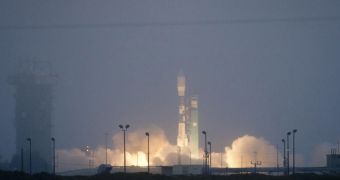An instrument designed to measure salinity on the Aquarius/Satélite de Aplicaciones Científicas (SAC)-D satellite has just turned 1 on Earth's orbit. The Aquarius apparatus was developed by NASA.
Engineers at the space agency's Jet Propulsion Laboratory (JPL), in Pasadena, California and the Goddard Space Flight Center (GSFC), in Greenbelt, Maryland, worked on building this orbital asset.
The pioneering instrument's main mission is to assess how changes in top ocean layer salinity are controlled by the planet's water cycles, as well as by slight variations in its climate. Aquarius was turned on just two and a half months after SAC-D had reached orbit.
Some of the phenomena it observed since then include localized variations in ocean salinity caused by tropical storms, the massive freshwater plumes of the Amazon River mixing with Atlantic Ocean waters, and so on.
The SAC-D mission is a collaboration between NASA, which provided Aquarius, and the Argentine space agency, which contributed the rest of the spacecraft. Various institutions from Canada, Italy and France also contributed instruments to the satellite.
The spacecraft launched on June 10, 2011, from the Vandenberg Air Force Base (VAFB), in California, aboard a Delta II delivery system. It managed to reach its intended orbit about an hour later, and immediately established a downlink to Mission Control.
“It was a very remarkable achievement, that within such a short period of time after turning the instrument on we were producing very good-looking data. It was beyond our expectations,” explains Gary Lagerloef, a scientist at Earth & Space Research, in Seattle.
The expert, who is also the principal investigator of the Aquarius instrument, says that the second year of mission will include a number of new objectives, such as resolving a few calibration errors, and confirming the instrument's readings with a campaign to be conducted across Earth's oceans.
“An overarching question in climate research is to understand how changes in the Earth's water cycle – meaning rainfall and evaporation, river discharges and so forth – ocean circulation, and climate link together,” Lagerloef explains.
“Salinity is the variable we can use to measure that coupling effect. It's a critical factor and it will eventually be used to improve climate forecast models,” he concludes.

 14 DAY TRIAL //
14 DAY TRIAL //